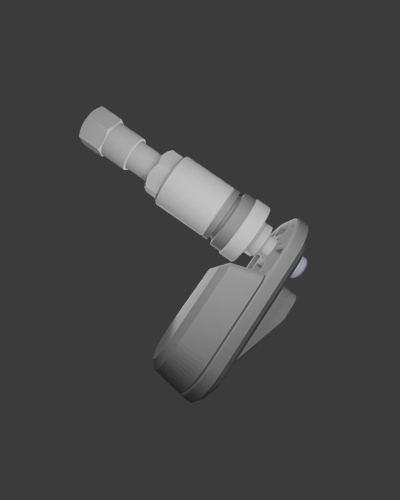Which Tire Pressure Monitoring System Is Best for You: Direct or Indirect?

Maintaining optimal tire pressure is one of the most important aspects of vehicle safety and performance. An under-inflated or over-inflated tire can lead to poor handling, reduced fuel efficiency, and even dangerous blowouts. This is why vehicles today are equipped with a Tire Pressure Monitoring System (TPMS)—an essential feature designed to alert drivers about significant changes in tire pressure. But not all TPMS are created equal. There are two primary types: Direct TPMS and Indirect TPMS. Each system functions differently and offers distinct advantages and limitations. So, how do you decide which one is right for your needs? This comprehensive tire pressure monitoring system comparison will help you understand the pros and cons of each system to make an informed choice.
Understanding TPMS: Why It Matters
Before diving into the comparison, it’s crucial to understand what TPMS does and why it’s essential. A TPMS monitors the air pressure inside pneumatic tires and alerts the driver when tire pressure drops significantly below the recommended level. Proper tire pressure ensures even tread wear, optimal handling, better fuel economy, and enhanced safety. According to the National Highway Traffic Safety Administration (NHTSA), vehicles equipped with TPMS are 55% less likely to experience a severe tire issue due to under-inflation.
There are two primary systems used to achieve this: Direct TPMS and Indirect TPMS. While both aim to monitor tire pressure, they use different technologies and approaches.
What Is Direct TPMS?
Direct TPMS uses pressure sensors mounted inside each tire—typically on the inner surface of the rim or valve stem. These sensors directly measure the actual pressure in each tire and transmit that data to the vehicle’s onboard computer. If any tire falls below a preset threshold, the system alerts the driver immediately via the dashboard.
Advantages of Direct TPMS:
- Accurate and Real-Time Data: Because it measures pressure directly, the readings are precise.
- Individual Tire Monitoring: Provides information for each tire individually, allowing you to pinpoint the problem area quickly.
- Temperature Data: Some direct systems also measure tire temperature, offering an additional layer of safety.
- Immediate Alerts: Real-time updates mean you can respond to issues promptly, reducing the risk of damage or accidents.
Disadvantages of Direct TPMS:
- Higher Cost: Direct systems are typically more expensive due to the cost of individual sensors.
- Maintenance: Sensor batteries eventually need to be replaced, and installation or replacement can be labor-intensive.
- Vulnerability: Sensors can be damaged during tire changes or rough road use.
What Is Indirect TPMS?
Indirect TPMS, on the other hand, doesn’t measure tire pressure directly. Instead, it uses the vehicle’s ABS (Anti-lock Braking System) and wheel speed sensors to estimate tire pressure. When a tire becomes under-inflated, its diameter decreases slightly, causing it to rotate faster than properly inflated tires. The system detects this discrepancy and sends an alert.
Advantages of Indirect TPMS:
- Lower Cost: Because it uses existing sensors and systems, indirect TPMS is more affordable.
- Less Maintenance: There are no battery-powered sensors in the tires, reducing the need for servicing.
- Simpler Installation: Since it relies on software and existing hardware, installation and repairs are less complicated.
Disadvantages of Indirect TPMS:
- Less Accurate: It estimates rather than measures pressure, so it may not detect all under-inflation conditions accurately.
- No Individual Tire Data: Usually doesn’t tell you which tire is under-inflated.
- Calibration Required: After rotating or changing tires, you must recalibrate the system manually.
- Delayed Alerts: Changes in tire pressure might not be detected immediately, especially in slow leaks.
Tire Pressure Monitoring System Comparison: Direct vs. Indirect
| Feature | Direct TPMS | Indirect TPMS |
| Accuracy | High (measures actual pressure) | Moderate (estimates pressure) |
| Real-Time Alerts | Yes | Sometimes delayed |
| Individual Tire Monitoring | Yes | No |
| Cost | Higher | Lower |
| Maintenance Requirements | Sensor battery replacement required | Minimal |
| Installation Complexity | More complex | Simpler |
| Additional Features | Temperature sensing possible | Not available |
| Sensor Damage Risk | Higher | None (no physical sensors) |
| Calibration Needed After Service | Rarely | Often required |
Which One Is Best for You?
The best choice depends on your specific needs, budget, and how you use your vehicle.
- Choose Direct TPMS if:
You want the most accurate, real-time data and individual tire monitoring. Ideal for high-performance vehicles, long-distance drivers, or those living in regions with extreme weather where temperature and pressure changes are frequent. - Choose Indirect TPMS if:
You prefer a more cost-effective and low-maintenance option. Suitable for everyday city driving and for vehicles where precision is not mission-critical.
Final Thoughts
Both Direct TPMS and Indirect TPMS have their merits. While Direct TPMS offers precise and reliable data, it comes with a higher cost and maintenance needs. Indirect TPMS, while more budget-friendly and easier to maintain, may not provide the same level of accuracy or individual monitoring.
Understanding your driving habits, environment, and how much importance you place on real-time precision will help you choose the system that best suits your needs. With the right TPMS in place, you can enhance your vehicle’s safety, fuel efficiency, and tire longevity—ensuring peace of mind every time you hit the road.
Ready to Upgrade You’re TPMS? Contact Minder Research, Inc. Today!
When it comes to tire safety and performance, choosing the right Tire Pressure Monitoring System is more than just a technical decision—it’s a step toward safer driving and peace of mind. Whether you prefer the precision of a Direct TPMS or the simplicity of an Indirect TPMS, the experts at Minder Research, Inc. are here to help you make the best choice for your vehicle.
As industry leaders in TPMS technology, Minder Research offers a wide range of innovative and reliable monitoring solutions tailored to your specific needs. Their products are trusted by drivers across the country for their accuracy, durability, and user-friendly design.


